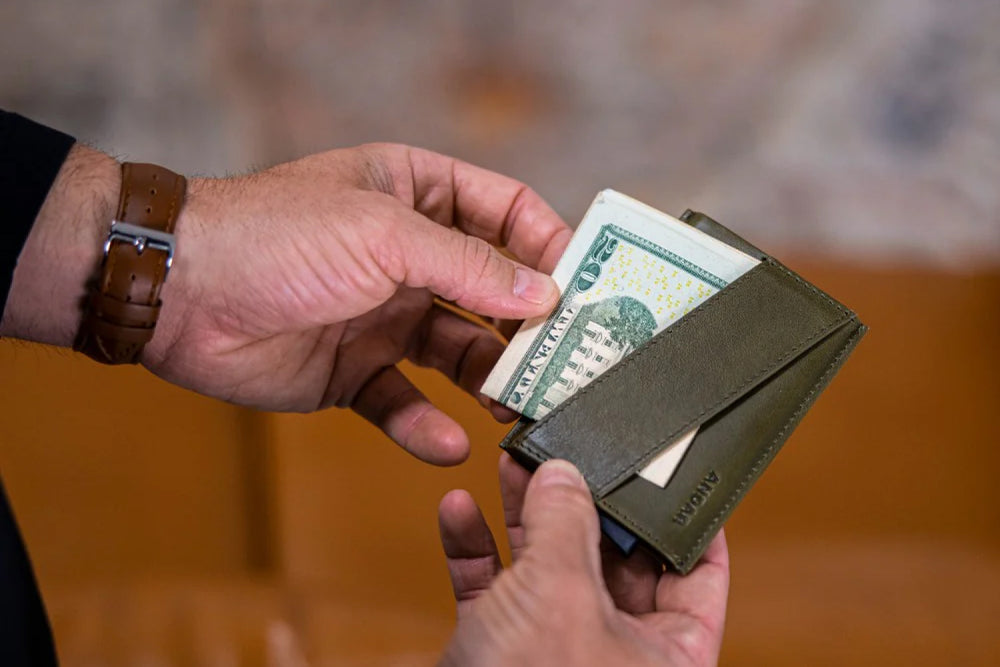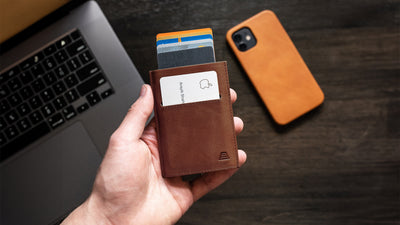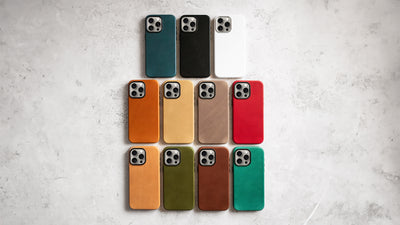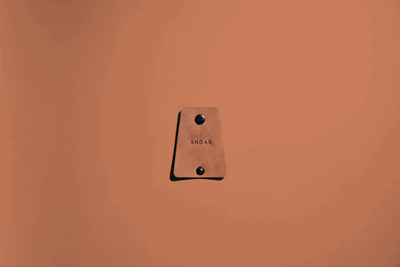The Blog
What Is Eco-Leather and Why You Need It

As more and more consumers work to lessen their environmental impact, leather products that are eco-friendly are becoming increasingly popular. These types of leather emulate genuine, real leather while still decreasing your ecological footprint.
At Andar, we care deeply about using high-quality leather materials that are less wasteful, more durable, and still stylish. With vegan leather products, we believe we can reduce the environmental impact of the leather industry while crafting elegant, long-lasting products.
Follow us through this article as we discuss the different types of eco-leather available out there today and how they can help you make a difference.
Types of Eco-Friendly Leather
The term eco leather refers to any leather that is eco-friendly. There are many types of leather that can reduce your environmental impact. Some are vegan or plant-based, while others simply recycle used materials to create a more sustainable product.
Many of these products help to reduce potentially harsh chemicals used in the production process, such as the chromium sulfates that are sometimes used in chrome tanning. These chemicals prevent rot but can irritate the lungs, eyes, and skin.
This is why at Andar, we advocate for the benefits of vegetable tanning, which is significantly less toxic and yet more effective in preserving the beauty of leather products.
Whatever type of material you choose, all eco-leathers should be non-toxic, resilient, and long-lasting. The last thing you’d want is to purchase a product that’s going to quickly wear down and soon end up in a landfill anyway.
Recycling Real Leather
While this may not be a completely vegan option, it still works to reduce your ecological footprint just the same. By recycling real leather, you get more use out of the material while still crafting a durable product.
This is also known as bonded leather or reconstituted leather. It’s made using a combination of leather fibers and scraps. This raw material is blended together with bonding agents, laminated onto a paper or cloth base, and eventually embossed with a pattern or design that imitates the grainy texture and sheen of real leather.
Faux Leather
You may not have thought of faux leather immediately when you considered the types of eco-friendly leather available out there. But faux leather has been around for some time and is not usually a 100% vegan leather alternative.
The manufacturing process involves treating and tanning a plastic base with waxes and oils. Along with those, polyurethane is typically used to mimic the color and texture of animal skin. The resulting product is as durable as some animal leathers but still vegan.
This artificial leather lacks a lot of the puncture and tear resistance found in real leather. At the same time, it is composed of a lot of plastic and synthetic materials between the polyurethane and plastic base. This means that it can take hundreds of years to decompose in the landfill, potentially releasing toxic chemicals.
PU Leather
Polyurethane leather, or PU leather for short, is another eco-leather that can aid sustainability. This is typically a completely vegan alternative. It’s made with thermoplastic polymers and is often used for leather shoes, car seats, and other furniture.
While this may lessen the impact on the leather or animal industry, we run into some problems with polyurethane and thermoplastics or polyvinyl chloride. This fake leather can sometimes give itself away with an aroma of plastic and minimal durability. At the same time, decomposition happens much slower than with a plant-based alternative leather.
Cactus Leather: Plant-Based, Non-Toxic, Vegan.
Cactus leather is an eco-leather that is particularly exciting. This type of material is made using completely natural materials and produces leather with an authentic sheen. Not only that, but this is one of the most durable, water-resistant, plant-based leathers available today.
Cactus leather is breathable and has a high tear resistance as well, just like real leather. It can be used to produce a wide range of leather goods, such as shoes, handbags, phone cases, and wallets, as well as high-end furniture and upholstery.
Furthermore, it does not have to rely on dangerous chemicals for tanning or preservation, like some recycled or genuine leathers. It’s a natural leather that doesn’t take half a millennium to decompose or produce toxic by-products in the process.
How Is Cactus Leather Made?
Cactus leather can significantly reduce the ecological impact of the leather and meat industry, as it has one of the most sustainable eco-leather production processes. Unlike other alternatives, it does not rely on dangerous plastics like PVCs or harmful tanning chemicals.
The process is relatively simple and wholesome:
- First, the cactus plant is harvested, typically the Nopal cactus plant, which grows in arid regions like Mexico and the Southwestern US. The mature leaves are snipped off, washed, and then mashed until the moisture retreats into an almost paste-like substance.
- Secondly, this material is left to dry in the sun for a few days until the moisture completely evaporates.
- The dried material is then ground into a powder and combined with a formula that creates bio-resin.
- Finally, the bio-resin is spread onto a carrier material made of cotton or polyester in order to create the finished product: Cactus leather!
If you’re interested in going plant-based, Andar has got your back with a great selection of wallets made from cactus leather. This includes the saguaro color option for our elegant, stylish, and resilient products like The Apollo and The Pilot.
A Plant-Based Revolution in Leather
Cactus leather is one of the more enticing entries in a long line of organic, vegan leathers made today. These plant-based leathers don’t consist of harmful chemicals and plastics and are more durable than most synthetic leathers.
There is a wealth of leathers made from organic materials:
- Pineapple leather is made from pineapple leaves, washed with hot water, compressed, and joined together. They are then dried, the rinds removed and tanned into a durable, resistant leather.
- Cork leather is produced from bark, which is dried for upwards of six months, then boiled and sliced into thin sheets of leather.
- Apple leather is made up of apple cores, seeds, pulp, and skin, which is then dried up and ground into a powder. However, this leather must then be mixed with polyurethane to produce the material, making for a half-organic alternative.
Amongst so many alternatives, cactus leather is particularly sustainable because the Nopal cactus plant requires very little water in comparison to pineapples or apples. This makes it quite sustainable to grow, plus the plants are not killed during harvesting.
In addition, the Nopal cactus is a strong carbon sequester, meaning it sucks carbon dioxide out of the atmosphere, and fights the prevalence of greenhouse gasses. Sounds like a win-win for everyone.
Take Care of Your Eco Leather With Andar
Hopefully, this article has made you excited about the environmental benefits of eco-leather! In particular, plant-based, vegan alternatives are leading the way in reducing the ecological footprint of leather production.
To maintain that classic sheen and strong material, it’s important to clean and care for your cactus leather. Make sure to stray away from using bleach when you clean your eco-leather products, and avoid excessive humidity, heat, or dryness to prevent cracking.
If you’ve enjoyed our article, we have plenty more guides on leather care and the leather-making process. Thanks for learning with us!
Sources:
Faux Leather vs Real Leather: Which One is More Eco Friendly? | Nomomente












